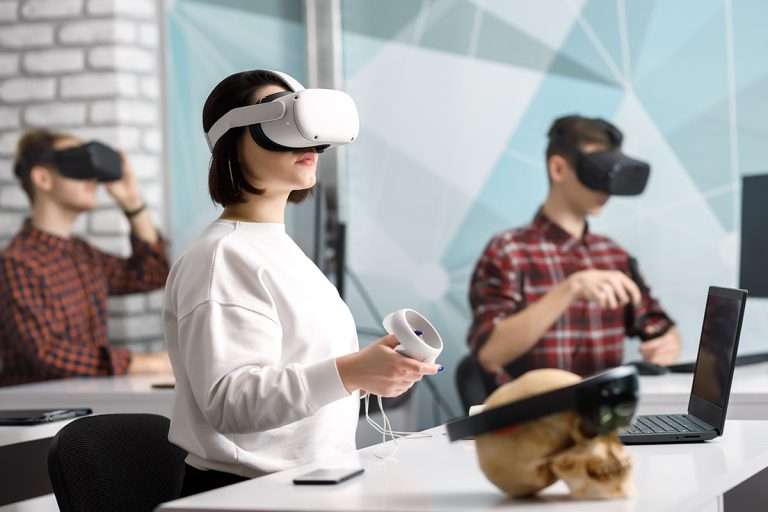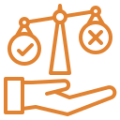Focus on One Concept at a Time
You’ll get the best results if you pick just one concept to teach per module. Just one. Most organizations try to cram three or four different ideas into a seven-minute video, and it never works out well.
Look at compliance training. Most organizations make employees sit through brutal 45-minute sessions that jump from data privacy to workplace harassment to who knows what else. Split it into smaller, more focused pieces, and employees actually learn something. You could have one module that only teaches employees how to find these phishing emails. That’s it. Another one explains what counts as confidential data and why they should care. Every piece stands on its own like that, and the information tends to stick way better.

Short lessons help once they’re specific and practical. Generic videos about “the importance of communication” that everyone’s seen a million times aren’t helping anyone. Employees need techniques they can use. Give them replies for when a coworker asks them to share log info over lunch.
Microlearning that works best deals with situations employees face this week, not vague ideas they might use eventually. Give them the exact tools they need for the situations they face every day at work. Scenario-based learning works especially well for these shorter formats. You can do a three-minute simulation where an employee practices tough conversations or looks for security threats in a setup that looks like their actual workplace. Employees remember what they actually do way better than what they just watch, especially when it matches their actual job.
Each module needs to feel whole on its own while still being part of something bigger. Every one should solve a particular problem or teach a particular skill that employees can put to use. That’s how you get employees to actually pay attention and remember what they’ve learned.
Help When Employees Need It Most
Organizations get the timing completely wrong. Most places love to schedule training weeks before anyone needs it. Like they’ll teach you about new software three weeks before it arrives. Maybe you remember half of it at best. Send employees a quick two-minute refresher on Sunday night (when they’re already thinking about Monday anyway). That’s when it actually sticks.
It’s most helpful to match the training to when employees are doing the work. A sales rep with a client meeting tomorrow should get tonight’s product update, not last month’s. Or warehouse workers about to use new equipment should get safety reminders during their morning coffee break, right before they head out there – it makes training stop being this annoying distraction that pulls employees away from work. Employees start to see it as something that actually helps them succeed.

Search functionality matters too. Employees should be able to type in what their problem is, and boom – there’s the answer. No need to click through a million folders or try to remember what the course was called. No one should have to dig through old emails or message coworkers asking where to find that one training video from six months ago. Everything needs to work on phones, too. Most employees are learning during those random moments – while they wait for elevators, ride the train, or grab their morning coffee. Content that takes forever to load on a phone or looks like garbage on that small screen means that employees just won’t bother. Employees will find workarounds or ask their desk neighbor instead.
You’ve nailed it when employees start to look up these modules themselves without anyone telling them to. Employees will actually bookmark the helpful ones and share them with new team members. That’s when training stops being homework and starts being something employees actually want to use – a tool that makes their jobs easier.
Employee Choice with Better Tracking
Microlearning works best when employees choose what they need to learn and when. An employee about to lead their first big meeting can grab a quick module on facilitation skills right before they walk in. Perhaps they have a tough conversation coming up with a coworker – they can pull up some tips on conflict management just when they need them. Employees who choose what to learn based on what’s actually happening in their work life are more likely to pay attention and use what they learn. Lessons blend into their workflow instead of creating this separate activity they have to make time for.
All this gets a bit harder to track, though. Traditional training tracks who showed up, who finished, and who got their certificate – it’s all pretty easy. Microlearning scattered throughout the day needs more creative methods to know if it’s actually working. Some organizations I’ve worked with ask employees to record short videos that show how they used what they learned. Other businesses send out quick follow-up questions like “tell us about a time this week you used that new technique.” It takes more work than just tallying heads in a classroom.

IT teams have figured out some ways to track this information. Micromodules on common computer problems get rolled out, and then help desk tickets get monitored. A sudden drop in password reset requests shows the strategy is working. Customer service teams do something similar – tracking how fast reps solve problems and watching what customers say in surveys after the team goes through new modules. Results speak for themselves.
Managers understandably worry about loss of control when they can’t see who’s doing what training. True success shows up in better team performance and independent problem-solving – certificates on the wall don’t matter nearly as much.
Where Microlearning Works the Best
Microlearning works best in situations where standard training programs can’t stay current. Security breaches show this – an employee clicks on a dodgy phishing link, and suddenly, you’re racing against time. A couple of weeks of waiting for formal training opens a dangerous gap where more damage happens. Organizations that see this are already pushing out quick five-minute modules within hours. Everyone still remembers what happened and can find those sketchy emails that nearly caught them out.
Knowledge retention is another place where microlearning delivers. Savvy teams now send out these short refreshers every few months. Skip the boring presentations in the conference room – just put what matters front and center. There’s a big gap between assuming employees remember where the fire exits are and actually checking that they still know.

The pace of change poses another challenge – everything moves fast. New software features drop all the time, and policies and procedures change overnight. Teams that sit around waiting for standard training sessions find themselves already behind. Healthcare facilities have figured this out nicely. Nurses can check out new medication procedures between seeing patients, right on their phones. Or they’ll catch up on product changes during those slower afternoon hours. Information reaches them right when they need it, not three weeks later in some training session everyone’s trying to skip.
Workers on different shifts and remote teams probably benefit most from microlearning. Standard training assumes everyone can just show up at 2 PM on a Tuesday, which completely breaks down when half your team works nights or they’re spread across different time zones. Microlearning lets these workers go through short lessons whenever it actually works for them. Maybe during their coffee break, maybe right before they start work – that flexibility makes all the difference. Remote employees especially appreciate being able to pause and replay content, something impossible in live sessions, where asking someone to repeat themselves three times gets awkward fast.
Some Topics Need More Time
Microlearning isn’t going to fix every training problem you have. Quick refreshers on skills or small bits of information work quite well with it. Some topics just need more time and space to breathe.
Leadership development is one area where you have all these nuanced workplace situations that need actual conversation, and you can’t pack that into five-minute chunks. The same goes for technical certifications. Learners need to get their hands dirty and practice for a while to build up that muscle memory. Organizations usually take their existing hour-long presentations and just chop them up into smaller pieces. Organizations then stick a “microlearning” label on it and think they’re done. That’s not how it works, though; it needs its own design strategy.

Software development gives a strong example – you can’t just watch a few quick videos and suddenly grasp tough programming concepts. Developers need time to actually write code and work through bugs and see how all the pieces fit together. A combined strategy works way better. You can use microlearning modules before a big workshop so everyone walks in already familiar with the basics, which makes the whole session far more productive. Or you can use them afterwards to help participants remember and apply what they learned. Team-building exercises require group interaction – separate modules can’t replicate the collaborative problem-solving that happens when teams work together in person.
It’s all about picking the right tool for what needs doing. Microlearning is great for quick product updates or compliance refreshers. Deep technical skills and company culture changes need a bigger and more comprehensive strategy, though micro-modules can still support and reinforce the bigger picture. Each training situation deserves careful consideration about which strategy will actually help employees learn and grow in their roles.
The Bottom Line for Your Business
Workplace learning has changed dramatically over the past few years. Old-school training sessions that used to take up whole afternoons just don’t cut it anymore. Organizations are finally figuring this out. It’s pretty obvious – if you give employees the chance to learn in smaller bites that actually fit into their day, something clicks. Employees actually remember the material and use it at work. It’s a big deal.
Change didn’t happen overnight, though. Businesses spent years trying to force traditional classroom methods into online formats. Hour-long video lectures and massive PDFs didn’t solve anything – they just moved the problem online. Employees would zone out halfway through or skip the training entirely. Completion rates were terrible, and knowledge retention was even worse.

Tech improvements from even five years back have been dramatic. I’m not talking about the basic point systems where you’d earn badges or whatever. Modern learning platforms deliver real value. Everything works on phones now, and employees can jump on a quick lesson while they’re on the train or knock one out between meetings. Five-minute modules beat two-hour workshops every time. Subtitles and transcripts are built in. Everyone can learn their own way, and it works for everyone.
Data has proven this, too. Organizations tracking their learning metrics see actual results. Completion rates shoot up because employees can actually finish modules. Knowledge checks show better retention. Managers report seeing new skills applied on the job within days instead of months.
At HRDQ-U, we’ve built a thriving community that is focused on making professional development accessible and practical for working professionals. Join us for our webinar “Optimize Your Talent Development Investments with the ROI Estimator”. Also, remember to check out our recommended product from HRDQStore, our Reproducible Training Library Complete Collection!






























